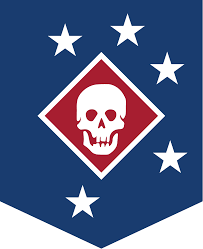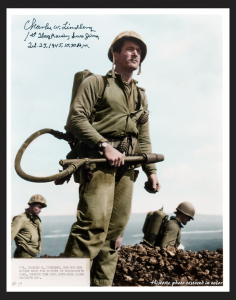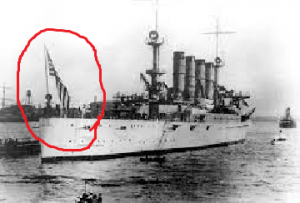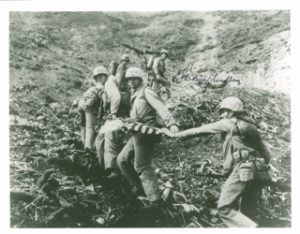Lindberg, Charles Willard “Chuck”, born 26-06-1920, in Grand Forks, North Dakota,  to Carl Emanuel Lindberg (1889–1957) and his wife Veta Mae, born Bowen, Lindberg (1890–1972). He had six brothers and three sisters: June Theota Lindberg (1915–19780, John Emanuel Lindberg (1916–1980), Russell Henry Lindberg (1918–1991), Eugene Carl Lindberg (1922–1999), Harry Ardell Lindberg (1924–1996), Dorothy E Lindberg Wencl (1926–2011) Ruth Harriett Lindberg Borgen,(1928–2005), James Franklin Lindberg (1933–1986), Max Elroy Lindberg (1935–1996).
to Carl Emanuel Lindberg (1889–1957) and his wife Veta Mae, born Bowen, Lindberg (1890–1972). He had six brothers and three sisters: June Theota Lindberg (1915–19780, John Emanuel Lindberg (1916–1980), Russell Henry Lindberg (1918–1991), Eugene Carl Lindberg (1922–1999), Harry Ardell Lindberg (1924–1996), Dorothy E Lindberg Wencl (1926–2011) Ruth Harriett Lindberg Borgen,(1928–2005), James Franklin Lindberg (1933–1986), Max Elroy Lindberg (1935–1996).
Chuck Lindberg lived in Grand Forks, North Dakota, when he enlisted in the Marine Corps  shortly after the Japanese Navy attack on Pearl Harbor.
shortly after the Japanese Navy attack on Pearl Harbor. After completing recruit training, he volunteered for the Marine Raiders,
After completing recruit training, he volunteered for the Marine Raiders,  a special unit of the Marine Corps. Lindberg first saw combat on Guadalcanal while serving as a member of the 2nd Raider Battalion (“Carlson’s Raiders”), under command of iuetenant Colonel Evans Fordyce Carlson
a special unit of the Marine Corps. Lindberg first saw combat on Guadalcanal while serving as a member of the 2nd Raider Battalion (“Carlson’s Raiders”), under command of iuetenant Colonel Evans Fordyce Carlson  and participated in the “Long Patrol”. He also saw combat with the 2nd Raiders on Bougainville. In February 1944, the Marine Raider (and Paramarine) units were disbanded and he returned to the United States. He was reassigned to the newly activated 5th Marine Division
and participated in the “Long Patrol”. He also saw combat with the 2nd Raiders on Bougainville. In February 1944, the Marine Raider (and Paramarine) units were disbanded and he returned to the United States. He was reassigned to the newly activated 5th Marine Division  at Camp Pendleton, California. After training at Camp Pendleton, the division was sent to and trained in Hawaii before leaving for Iwo Jima.
at Camp Pendleton, California. After training at Camp Pendleton, the division was sent to and trained in Hawaii before leaving for Iwo Jima.
Lindberg was assigned as a flamethrower operator  in 3rd Platoon, E Company, 2nd Battalion, 28th Marine Regiment, 5th Marine Division. On 19-02-1945, he landed with the fifth assault wave on the southeast beach of Iwo Jima closest to Mount Suribachi,
in 3rd Platoon, E Company, 2nd Battalion, 28th Marine Regiment, 5th Marine Division. On 19-02-1945, he landed with the fifth assault wave on the southeast beach of Iwo Jima closest to Mount Suribachi, which was the 28th Marine Regiment’s objective. Because of heavy fighting, the base of Mount Suribachi was not reached and surrounded until February 22. On February 23, flamethrower operators Coporal. Lindberg and Private Robert Goode of E Company were members of the 40-man combat patrol that climbed up Mount Suribachi to seize and occupy the crest and raise the Second Battalion’s American flag. On March 1, Lindberg was shot in the right forearm by a Japanese sniper and was evacuated off the island. He received the Silver Star for gallantry in action on Iwo Jima from February 19 to March 1, 1945 (Private Goode was also wounded on March 1 and awarded the Silver Star).
which was the 28th Marine Regiment’s objective. Because of heavy fighting, the base of Mount Suribachi was not reached and surrounded until February 22. On February 23, flamethrower operators Coporal. Lindberg and Private Robert Goode of E Company were members of the 40-man combat patrol that climbed up Mount Suribachi to seize and occupy the crest and raise the Second Battalion’s American flag. On March 1, Lindberg was shot in the right forearm by a Japanese sniper and was evacuated off the island. He received the Silver Star for gallantry in action on Iwo Jima from February 19 to March 1, 1945 (Private Goode was also wounded on March 1 and awarded the Silver Star).
The 5th Marine Division had the next casualities: killed in action 2.416, wounded in action 6.860 total casualities 9.276.
Mount Suribachi on Iwo Jima Marine Staff Sergeant Lou Lowery‘s 
 photo of the first flag on Mount Suribachi, after it was raised.
photo of the first flag on Mount Suribachi, after it was raised.  Left to right: 1st Lt. Harold G. Schrier (left side of radioman), Pfc. Raymond Jacobs (radio operator), Sergeant Henry ” Hank” Hansen (soft cap, holding flagstaff),
Left to right: 1st Lt. Harold G. Schrier (left side of radioman), Pfc. Raymond Jacobs (radio operator), Sergeant Henry ” Hank” Hansen (soft cap, holding flagstaff), 
 Pvt. Phil Ward (holding lower flagstaff), Platoon Sergeant Ernest “Boots” Thomas (seated), PhM2c. John Bradley, USN (holding flagstaff, standing above Ward and Thomas), Pfc. James Michels (holding M1 carbine), and Corporal Charles Lindberg (standing, far right).
Pvt. Phil Ward (holding lower flagstaff), Platoon Sergeant Ernest “Boots” Thomas (seated), PhM2c. John Bradley, USN (holding flagstaff, standing above Ward and Thomas), Pfc. James Michels (holding M1 carbine), and Corporal Charles Lindberg (standing, far right).
On 23-02-1945, Lieutenant Colonel Chandler W. Johnson, 
 commander of the 2nd Battalion, 28th Marine Regiment, ordered a platoon-size patrol to climb up 556-foot Mount Suribachi. First Lieutenant Harold Schrier,
commander of the 2nd Battalion, 28th Marine Regiment, ordered a platoon-size patrol to climb up 556-foot Mount Suribachi. First Lieutenant Harold Schrier, 
 E Company’s executive officer, was handed the Second Battalion’s American flag from Lieutenant Colonel Johnson (or the battalion adjutant) measuring 28 by 54 inches (137 by 71 cm) which had been taken from the attack transport USS Missoula
E Company’s executive officer, was handed the Second Battalion’s American flag from Lieutenant Colonel Johnson (or the battalion adjutant) measuring 28 by 54 inches (137 by 71 cm) which had been taken from the attack transport USS Missoula  on the way to Iwo Jima by First Lieutenant George G. Wells
on the way to Iwo Jima by First Lieutenant George G. Wells  the Second Battalion’s adjutant in charge of the battalion’s flags. Lieutenant Schrier was to it take a patrol with the flag up the mountain and raise the flag if possible at the summit to signal that Mount Suribachi was captured and the top secure. Captain Dave Severance, E Company’s commander, assembled the remainder of his Third Platoon and other member of the battalion including two Navy corpsmen and stretcher bearers. At 8:30 a.m., Lt. Schrier started climbing with the patrol up the mountain. Less than an hour later, the patrol, after receiving occasional Japanese sniper fire, reached the rim of the volcano. A brief firefight with the Japanese occurred, Lt. Schrier and his men captured the summit.
the Second Battalion’s adjutant in charge of the battalion’s flags. Lieutenant Schrier was to it take a patrol with the flag up the mountain and raise the flag if possible at the summit to signal that Mount Suribachi was captured and the top secure. Captain Dave Severance, E Company’s commander, assembled the remainder of his Third Platoon and other member of the battalion including two Navy corpsmen and stretcher bearers. At 8:30 a.m., Lt. Schrier started climbing with the patrol up the mountain. Less than an hour later, the patrol, after receiving occasional Japanese sniper fire, reached the rim of the volcano. A brief firefight with the Japanese occurred, Lt. Schrier and his men captured the summit. 
A section of a Japanese steel pipe was found on the mountain and the battalion’s flag Lt. Schrier carried was tied on to it by Lt. Schrier, Sergeant Henry Hansen and Coropral. Lindberg (Platoon Sergeant Ernest Ivy Thomas 
 was watching inside the group with a grenade in his hand while Private Phil Ward
was watching inside the group with a grenade in his hand while Private Phil Ward  held the bottom end of the pipe horizontally off the ground). The flagstaff was then carried to the highest part on the crater and raised by Lt. Schrier, Platoon Sgt. Thomas, Sgt. Hansen, and Corporal Lindberg at approximately 10:30 a.m. Seeing the national colors flying caused loud cheering from the Marines, sailors, and Coast Guardsmen on the beach below and from the men on the ships near and docked at the beach. Due to the strong wind on Mount Suribachi, Sergeant. Hansen, Pvt. Ward, and Third Platoon corpsman John Bradley
held the bottom end of the pipe horizontally off the ground). The flagstaff was then carried to the highest part on the crater and raised by Lt. Schrier, Platoon Sgt. Thomas, Sgt. Hansen, and Corporal Lindberg at approximately 10:30 a.m. Seeing the national colors flying caused loud cheering from the Marines, sailors, and Coast Guardsmen on the beach below and from the men on the ships near and docked at the beach. Due to the strong wind on Mount Suribachi, Sergeant. Hansen, Pvt. Ward, and Third Platoon corpsman John Bradley 
 helped make the flagstaff stay in a vertical position. The men at, around, and holding the flagstaff which included Schrier’s radioman Raymond Jacobs (assigned to patrol from F Company), were photographed several times by Staff Sgt. Louis R. Lowery, a photographer with Leatherneck magazine who accompanied the patrol up the mountain. A firefight with some Japanese soldiers took place, an enemy grenade caused Sergeant Lowery to fall down which damaged his camera but not his film. Platoon Sergreant. Thomas was killed on March 3 and St. Hansen was killed on March 1.
helped make the flagstaff stay in a vertical position. The men at, around, and holding the flagstaff which included Schrier’s radioman Raymond Jacobs (assigned to patrol from F Company), were photographed several times by Staff Sgt. Louis R. Lowery, a photographer with Leatherneck magazine who accompanied the patrol up the mountain. A firefight with some Japanese soldiers took place, an enemy grenade caused Sergeant Lowery to fall down which damaged his camera but not his film. Platoon Sergreant. Thomas was killed on March 3 and St. Hansen was killed on March 1.
Lieutenant. Colonel Johnson decided about two hours or more later after the flag was raised, that a larger flag should replace it. The flag was too small to be seen on the other side of the mountain where the Japanese airfields and most of the Japanese troops were located, the thousands of Marines fighting there needed the inspiration from seeing the flag. While Lindberg was reloading his flamethrower tanks below Mount Suribachi, a 96 by 56 inch flag was obtained from a ship docked on shore and brought up to the top of Mount Suribachi by Private First Class Rene Gagnon 
 the Second Battalion’s runner (messenger) for E Company. At the same time, Sgt. Michael Strank,
the Second Battalion’s runner (messenger) for E Company. At the same time, Sgt. Michael Strank, 
 Corporal. Harlon Block,
Corporal. Harlon Block, 
 Private First Class Franklin Runyon Sousley,
Private First Class Franklin Runyon Sousley, 
 and Private Ira Hamilton Hayes
and Private Ira Hamilton Hayes 
 from Second Platoon, E Company, were sent to take supplies up to Third Platoon and raise the second flag. Once on top, the flag was attached to another Japanese steel pipe and raised by the four Marines and Private First Class. Harold Henry Schultz
from Second Platoon, E Company, were sent to take supplies up to Third Platoon and raise the second flag. Once on top, the flag was attached to another Japanese steel pipe and raised by the four Marines and Private First Class. Harold Henry Schultz

 and Private First Class. Harold Paul “Pie” Keller
and Private First Class. Harold Paul “Pie” Keller 
 both whom had went up Suribachi with the 40-man patrol. At the same time the second flag was raised, the original flag was lowered and taken down the mountain to the battalion adjutant by Private Gagnon. Sergeant. Strank and Corporal Block were killed on March 1. Private. Sousley was killed on March 21.
both whom had went up Suribachi with the 40-man patrol. At the same time the second flag was raised, the original flag was lowered and taken down the mountain to the battalion adjutant by Private Gagnon. Sergeant. Strank and Corporal Block were killed on March 1. Private. Sousley was killed on March 21.
Joe Rosenthal’s  (Associated Press) historical flag-raising photograph of the second flag-raising on Mount Suribachi appeared in Sunday newspapers on 25-02-1945, as the flag-raising on Mount Suribachi. This flag raising was also filmed in color by Marine Sergeant Bill Genaust (killed in action in March)
(Associated Press) historical flag-raising photograph of the second flag-raising on Mount Suribachi appeared in Sunday newspapers on 25-02-1945, as the flag-raising on Mount Suribachi. This flag raising was also filmed in color by Marine Sergeant Bill Genaust (killed in action in March)

 and was used in newsreels. Other combat photographers with and besides Rosenthal ascended the mountain after the first flag was raised and the mountaintop secured. These photographers including Rosenthal and an army photographer who was assigned to cover Marine amphibious landings for Yank Magazine, took photos of Marines, corpsmen, and themselves, around both of the flags. The second flag-raisers received national recognition. The three survivors (two were found out to be incorrectly identified) of the flag raising were called to Washington, D.C. after the battle by President Franklin Delano Roosevelt
and was used in newsreels. Other combat photographers with and besides Rosenthal ascended the mountain after the first flag was raised and the mountaintop secured. These photographers including Rosenthal and an army photographer who was assigned to cover Marine amphibious landings for Yank Magazine, took photos of Marines, corpsmen, and themselves, around both of the flags. The second flag-raisers received national recognition. The three survivors (two were found out to be incorrectly identified) of the flag raising were called to Washington, D.C. after the battle by President Franklin Delano Roosevelt  to participate in a bond tour to raise much needed money to pay for the war. The Marines who captured Mount Suribachi and those who raised the first flag, including Lindberg, generally did not receive the national recognition that was due to them even though the first flag raising was the first to receive some public recognition.
to participate in a bond tour to raise much needed money to pay for the war. The Marines who captured Mount Suribachi and those who raised the first flag, including Lindberg, generally did not receive the national recognition that was due to them even though the first flag raising was the first to receive some public recognition.
Lindberg was honorably discharged from the Marine Corps in January 1946, and returned home to Grand Forks, North Dakota. He married Violette Mae “Vi” Tack, 
 moved to Richfield, Minnesota, in 1951, where he raised two daughters and three sons, and worked as an electrician for 39 years. In the 1970s, he began telling his story about the capture of Mount Suribachi and the first American flag raising on top of which he had actually participated in, only to have his story called into question, until more of the facts of the first flag-raising became better known and accepted by the general public. He often spoke at schools, sharing some of his wartime memories of Iwo Jima and World War II with the children. In 1995, he returned to Iwo Jima for the 50th anniversary of the battle of Iwo Jima. In November 2006, he attended his last reunion of Third Platoon, E Company, 28th Marines, which was held in Washington, D.C.
moved to Richfield, Minnesota, in 1951, where he raised two daughters and three sons, and worked as an electrician for 39 years. In the 1970s, he began telling his story about the capture of Mount Suribachi and the first American flag raising on top of which he had actually participated in, only to have his story called into question, until more of the facts of the first flag-raising became better known and accepted by the general public. He often spoke at schools, sharing some of his wartime memories of Iwo Jima and World War II with the children. In 1995, he returned to Iwo Jima for the 50th anniversary of the battle of Iwo Jima. In November 2006, he attended his last reunion of Third Platoon, E Company, 28th Marines, which was held in Washington, D.C.
The Marine Corps War Memorial (also known as the Iwo Jima Memorial) in Arlington, Virginia,  which was inspired by Joe Rosenthal’s photograph of the second flag-raising atop Mount Suribachi by six Marines on 23-02-1945, was dedicated on 10-11-1954 (179th anniversary of the Marine Corps). Harold Schrier, Charles Lindberg, and Lou Lowery, attended the dedication ceremony as guests.
which was inspired by Joe Rosenthal’s photograph of the second flag-raising atop Mount Suribachi by six Marines on 23-02-1945, was dedicated on 10-11-1954 (179th anniversary of the Marine Corps). Harold Schrier, Charles Lindberg, and Lou Lowery, attended the dedication ceremony as guests.
Death and burial ground of Lindberg, Charles Willard “Chuck”.




President Dwight David “Ike” Eisenhower  sat upfront during the dedication ceremony with Vice President Richard Nixon, Secretary of Defense Charles E. Wilson, Deputy Secretary of Defense Robert Anderson, and General Lemuel C. Shepherd, the 20th Commandant of the Marine Corps. Ira Hayes, one of the three surviving flag raisers depicted on the monument, was also seated upfront with John Bradley (incorrectly identified as a flag raiser until 2016), Rene Gagnon (incorrectly identified as a flag raiser until 16-10-2019), Mrs Martha Strank, Mrs. Ada Belle Block, and Mrs. Goldie Price (mother of Franklin Sousley). Those giving remarks at the dedication included Robert Anderson, Chairman of Day; Colonel J.W. Moreau, U.S. Marine Corps (Retired), President, Marine Corps War Memorial Foundation; General Shepherd, who presented the memorial to the American people; Felix de Weldon, sculptor; and Richard Nixon, who gave the dedication address. Inscribed on the memorial are the following words:
sat upfront during the dedication ceremony with Vice President Richard Nixon, Secretary of Defense Charles E. Wilson, Deputy Secretary of Defense Robert Anderson, and General Lemuel C. Shepherd, the 20th Commandant of the Marine Corps. Ira Hayes, one of the three surviving flag raisers depicted on the monument, was also seated upfront with John Bradley (incorrectly identified as a flag raiser until 2016), Rene Gagnon (incorrectly identified as a flag raiser until 16-10-2019), Mrs Martha Strank, Mrs. Ada Belle Block, and Mrs. Goldie Price (mother of Franklin Sousley). Those giving remarks at the dedication included Robert Anderson, Chairman of Day; Colonel J.W. Moreau, U.S. Marine Corps (Retired), President, Marine Corps War Memorial Foundation; General Shepherd, who presented the memorial to the American people; Felix de Weldon, sculptor; and Richard Nixon, who gave the dedication address. Inscribed on the memorial are the following words:
In Honor And Memory Of The Men of The United States Marine Corps Who Have Given Their Lives To Their Country Since 10-11-1775
Chuck died at Fairview Southdale Hospital in Edina, Minnesota, on 24-06-2007, age 86, two days before his 87th birthday. Chuck Lindberg is buried at the Fort Snelling National Cemetery.


























Leave a Reply